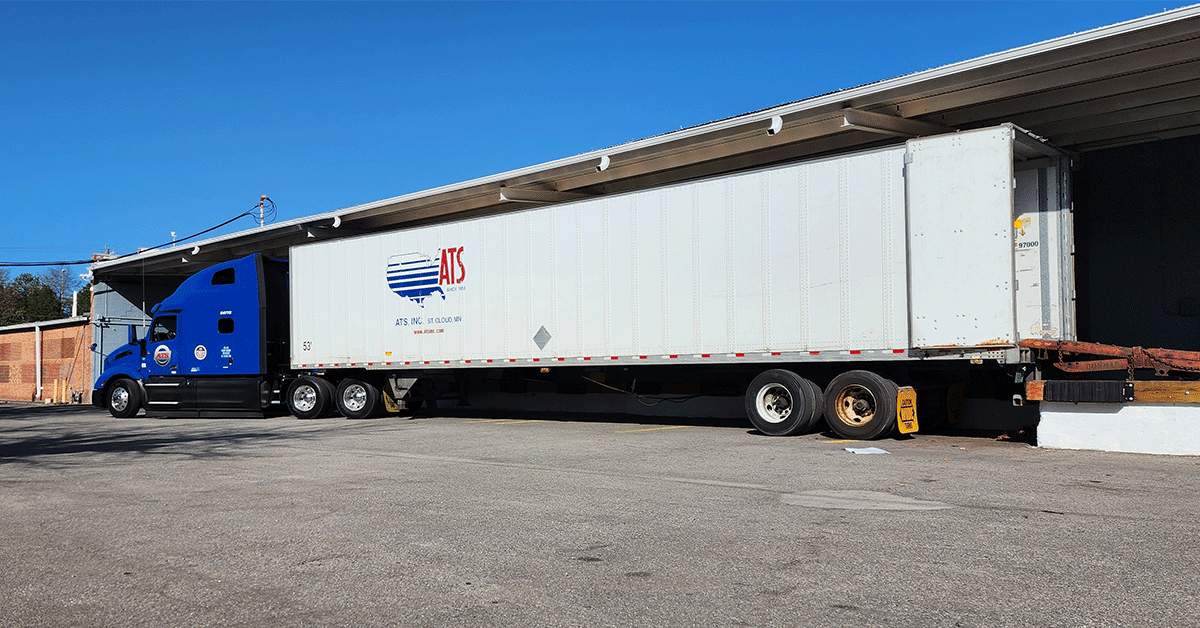Less-than-truckload (LTL) shipping is a cost-effective way for businesses to move smaller shipments more frequently. Instead of paying for an entire truck, multiple shippers share trailer space, which allows them to split their costs based on the weight and size of their freight.
If you're new to LTL shipping or are unsure of whether its the right solution for your needs, you're in the right place. Anderson Trucking Service (ATS) has served the LTL industry for decades, and we're happy to share our experience and expertise to help you optimize your supply chain.
In this blog, we’ll explain what LTL shipping is, what the experience is typically like when working with LTL carriers and help you decide what makes the most sense for your needs.
Understanding LTL Freight Shipping
What does LTL mean in shipping? LTL stands for "less-than-truckload." It describes a freight mode that consolidates smaller shipments from different companies into a single trailer.
While the combined shipments all travel on the same truck, they are still separated out by customer and consignee and tracked individually.
Compared to full truckload (FTL) shipping, in which one customer fills an entire trailer with its freight, LTL provides a shared-cost model for customers that do not have the volume to fill a trailer on its own. LTL customers pay only for the space their freight uses, not the entire trailer.
This approach reduces waste, optimizes trailer capacity, and allows shippers to move freight more frequently without waiting to fill a full load.

When Should You Use LTL Freight Shipping?
LTL freight is ideal for businesses that need flexible scheduling or want to control transportation costs without sacrificing reliability. LTL shipping makes the most sense when:
- You're shipping 1-6 pallets at a time, or up to about 10,000 pounds of freight.
- Your freight is durable, or is crated or palletized for safe handling.
- You don't need a dedicated truck or an exact delivery appointment.
- You're interested in balancing cost savings and reliability for routine shipments.
Because LTL freight requires multiple stops and shared space, expect transit times to be slightly longer than they would be for an FTL shipment. However, the savings and operational efficiencies that LTL shipping can open up for businesses often outweigh this trade-off.
Many businesses use both LTL and FTL options depending on order volume, shipment size, frequency, and seasonality. Both modes are valuable additions to a shipper's overall freight carrier network, as they can offer options and flexibility when the market shifts or tightens.
What Businesses Use LTL Shipping?
Many industries leverage LTL freight shipping services as part of their supply chain strategy. Here are a few examples of freight types and industries that frequently rely on LTL shipping:
- Construction: Palletized tools, tile, or small batches of materials delivered to job sites
- E-commerce & Distribution: Bulk consumer goods moving between warehouses
- Manufacturing: Machine parts, raw materials, or prototype components shipped to distributors
- Retail: Seasonal merchandise or inventory replenishment that doesn't fill a full trailer
Each of these industries present ideal use cases for LTL, as the mode allows for the require efficient, frequent movement of smaller shipments without forcing the shipper to overpay for unused trailer space.

Is LTL Shipping the Same as Partial Truckload (PTL) Shipping?
No, less-than-truckload (LTL) shipping is not the same as partial truckload (PTL) shipping. In general, PTL is used for shipments that are too big for LTL but not big enough for FTL.
PTL freight services bridge the gap between LTL and full truckload, offering a faster, safer, and often more economical option for mid-sized freight.
Here's a side-by-side comparison of the two modes:
LTL vs. PTL Freight Comparison
| Feature | LTL Freight | PTL Freight |
| Typical Size | 1-6 pallets | 6-18 pallets |
| Weight Range | Up to ~10,000 lbs. | ~10,000-30,000 lbs. |
| Pricing Method | Freight type, weight, distance | Space used, mileage |
| Number of Stops | Multiple | Few (More direct routes) |
| Speed | Moderate | Faster |
| Damage Risk | Slightly higher (More handling) | Lower |
| Best For | Frequent small shipments | Larger or more fragile partial loads |
A good rule of thumb: If your freight takes up more than half a trailer but less than a full truckload, PTL is likely to be more cost-efficient for you than LTL.
Ship LTL Freight with Confidence
LTL freight shipping offers businesses a flexible, cost-effective way to move smaller shipments without paying for unused trailer space.
By sharing capacity, shippers can control costs, reduce waste, and maintain steady delivery schedules — all while keeping freight secure and traceable.
Whether you’re sending a single pallet or multiple partial loads each week, partnering with an experienced carrier like ATS ensures your LTL freight moves efficiently, safely, and on time.
Want to learn more about using a freight brokerage (like ATS Logistics) to ship your LTL freight? Click here to check out our article on the pros and cons of brokering your LTL shipments.




